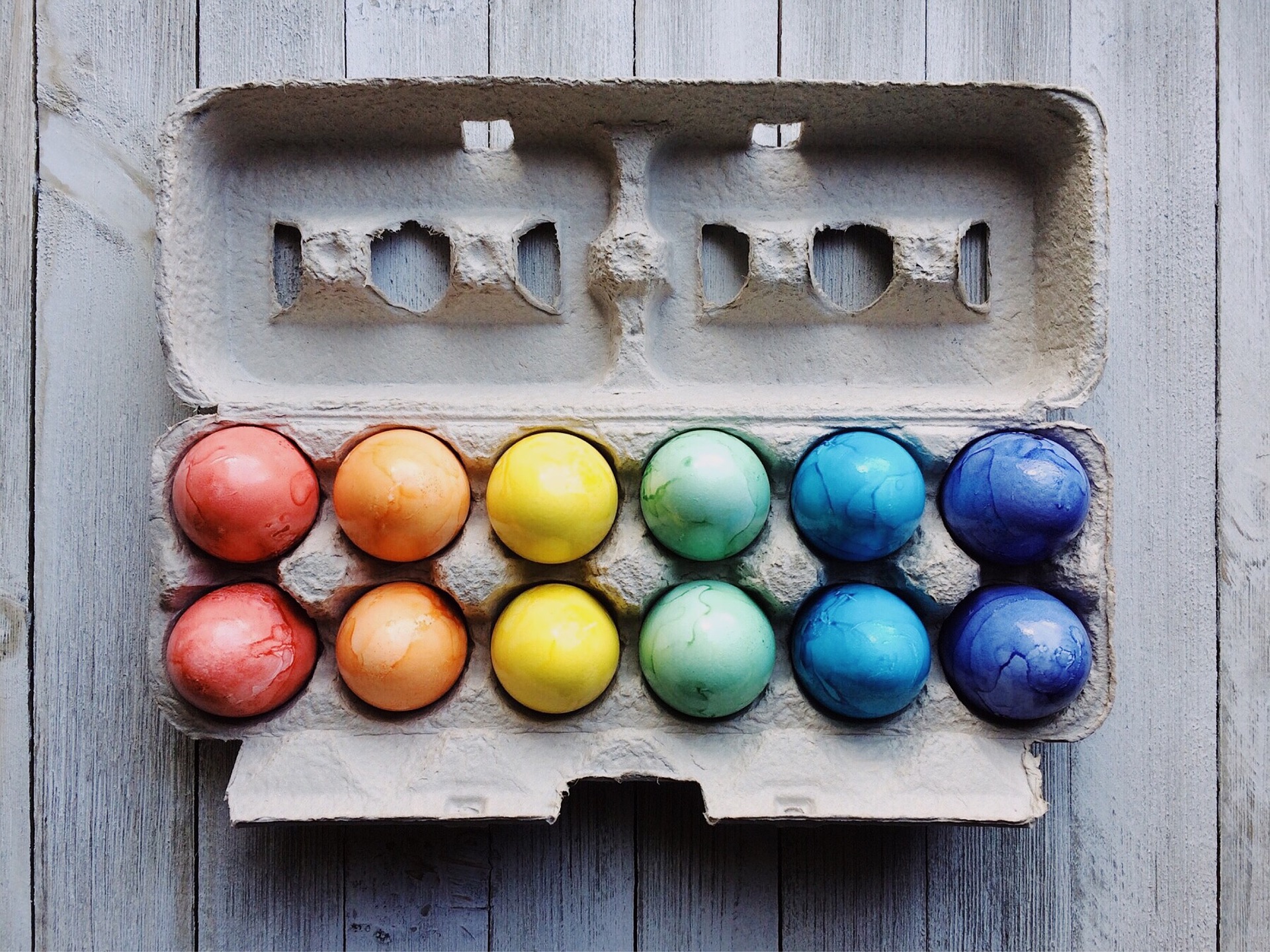Dying Easter Eggs the Natural Way

Colored Easter eggs are a staple at Easter. Orthodox Christians dye them red to symbolize the blood of Christ. Other Christians simply dye them in various colors as a symbol of the hope the season brings. Either way, Easter eggs are an important part of the holiday.
Unfortunately, typical Easter egg dyes are also loaded with chemicals. Luckily, there are natural alternatives. Dying Easter eggs using natural dyes is a great project for the whole family!
Bye Natural Food Coloring
The easiest approach to take is to buy completely natural food coloring, which you can easily find online or at the natural food store. There are many different brands. Look for "plant based food coloring" or "natural food coloring" on the package. Make sure you look at the ingredients, though, to confirm that it really is as natural as the packaging claims.
Process of Dying Eggs
The basic process for dying eggs is usually the same whether you use natural food coloring or the regular kind. You will want to use hard boil the eggs first, and the dye always looks better with white eggs. You should make an eco-friendly choice, if possible. These instructions are if you are using natural food coloring.
1. Add 1 cup of boiling water to a wide jar or glass measuring cup
2. Add 2 teaspoons of vinegar
3. Add 20-30 drops of food coloring of choice
4. Drop egg in the cup and let it sit for five minutes.
5. Remove egg and place on a drying rack
You'll want to repeat steps 1-3 for each color of dye you want to use. For example, if you only want to dye red eggs, you will only need to do the process once.
Making Your Own Natural Dye
That being said, you can actually make your own natural egg dye using natural ingredients. These color projections only work on white eggs. Boil the following plant materials in two cups of water. These are just a few ideas.
- 1 cup chopped, purple cabbage - blue eggs
- 1 cup red onion skins - red or lavender eggs (depending on the onion)
- 1 cup yellow onion skins - light orange eggs
- 1 cup beets - pink eggs
Add 1 teaspoon vinegar for each cup of liquid and place the liquid in a glass cup, one cup for each color. Drop a single egg in each cup, and let it stand for at least 10 minutes. Naturally made dyes from plant materials take longer to set.
As you can see, you can easily dye your eggs using natural materials. This is a great project for the whole family!
Unfortunately, typical Easter egg dyes are also loaded with chemicals. Luckily, there are natural alternatives. Dying Easter eggs using natural dyes is a great project for the whole family!
Bye Natural Food Coloring
The easiest approach to take is to buy completely natural food coloring, which you can easily find online or at the natural food store. There are many different brands. Look for "plant based food coloring" or "natural food coloring" on the package. Make sure you look at the ingredients, though, to confirm that it really is as natural as the packaging claims.
Process of Dying Eggs
The basic process for dying eggs is usually the same whether you use natural food coloring or the regular kind. You will want to use hard boil the eggs first, and the dye always looks better with white eggs. You should make an eco-friendly choice, if possible. These instructions are if you are using natural food coloring.
1. Add 1 cup of boiling water to a wide jar or glass measuring cup
2. Add 2 teaspoons of vinegar
3. Add 20-30 drops of food coloring of choice
4. Drop egg in the cup and let it sit for five minutes.
5. Remove egg and place on a drying rack
You'll want to repeat steps 1-3 for each color of dye you want to use. For example, if you only want to dye red eggs, you will only need to do the process once.
Making Your Own Natural Dye
That being said, you can actually make your own natural egg dye using natural ingredients. These color projections only work on white eggs. Boil the following plant materials in two cups of water. These are just a few ideas.
- 1 cup chopped, purple cabbage - blue eggs
- 1 cup red onion skins - red or lavender eggs (depending on the onion)
- 1 cup yellow onion skins - light orange eggs
- 1 cup beets - pink eggs
Add 1 teaspoon vinegar for each cup of liquid and place the liquid in a glass cup, one cup for each color. Drop a single egg in each cup, and let it stand for at least 10 minutes. Naturally made dyes from plant materials take longer to set.
As you can see, you can easily dye your eggs using natural materials. This is a great project for the whole family!
You Should Also Read:
Simple Natural Room Spray Recipe
Recipe for Natural Deodorant
Healthy and Natural Gift Ideas

Related Articles
Editor's Picks Articles
Top Ten Articles
Previous Features
Site Map
Content copyright © 2023 by Katherine Tsoukalas. All rights reserved.
This content was written by Katherine Tsoukalas. If you wish to use this content in any manner, you need written permission. Contact Katherine Tsoukalas for details.








